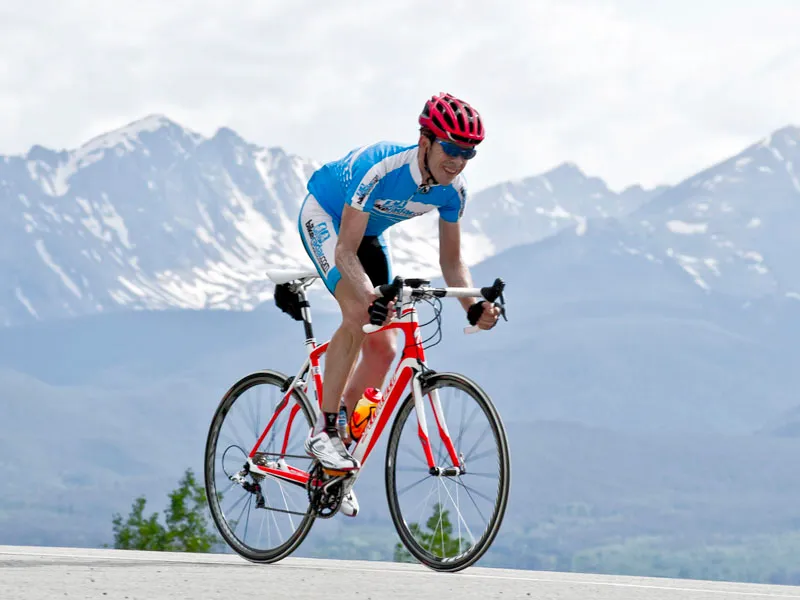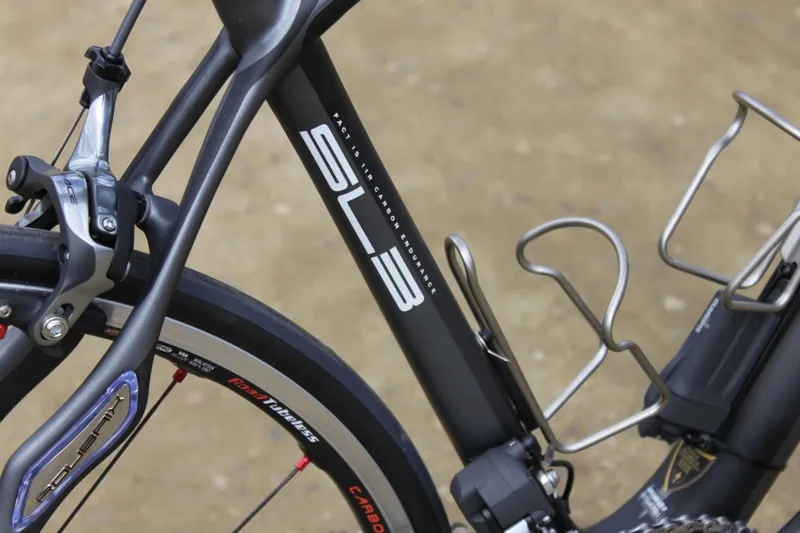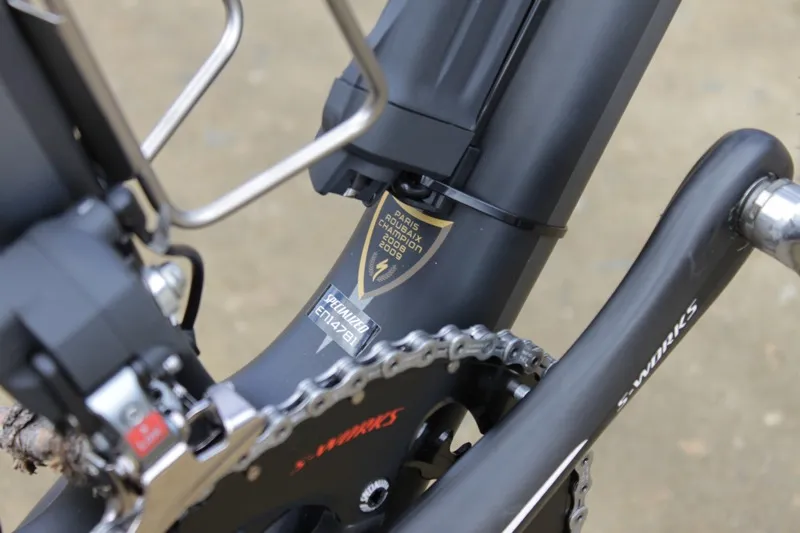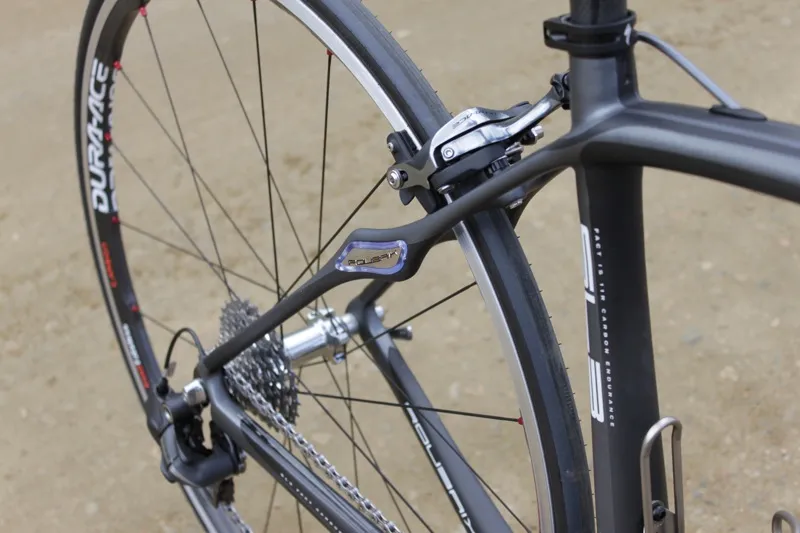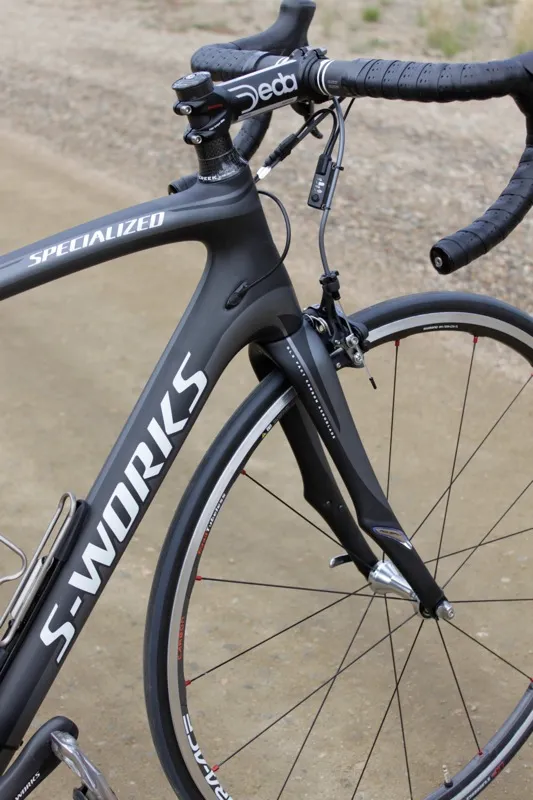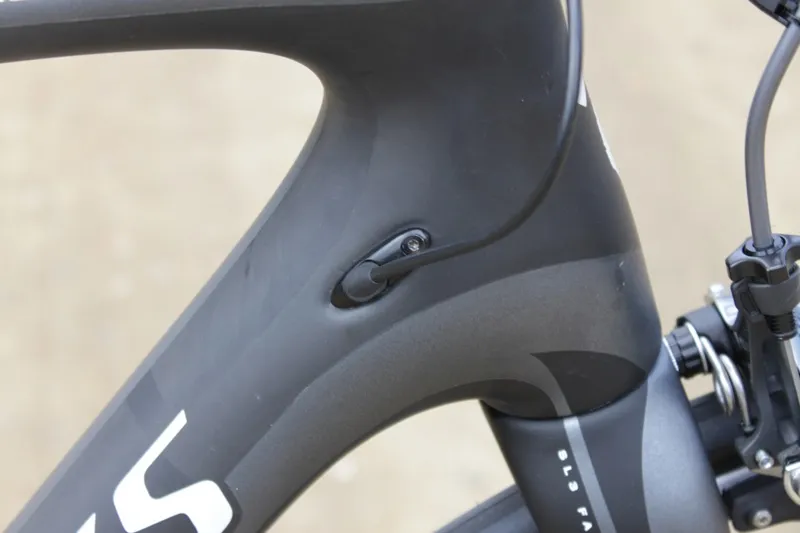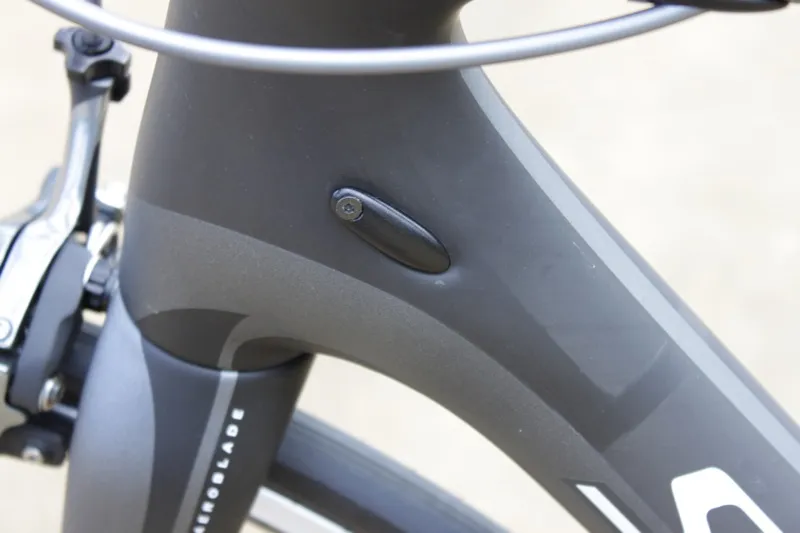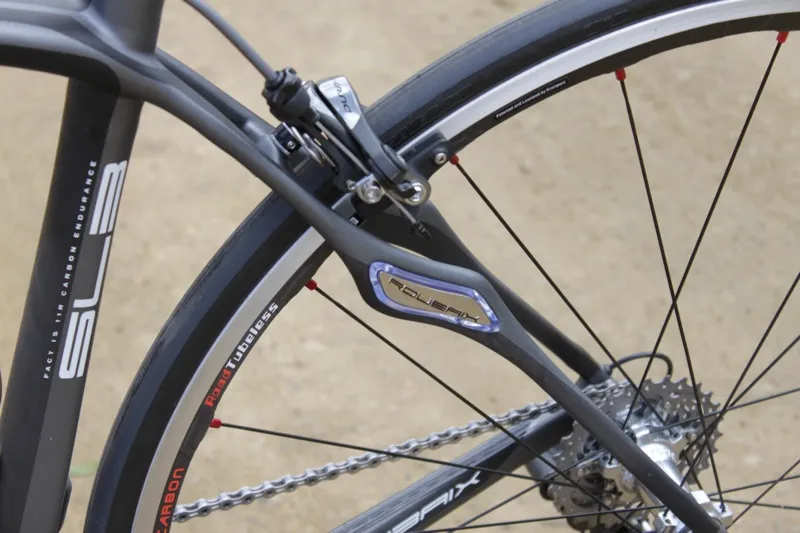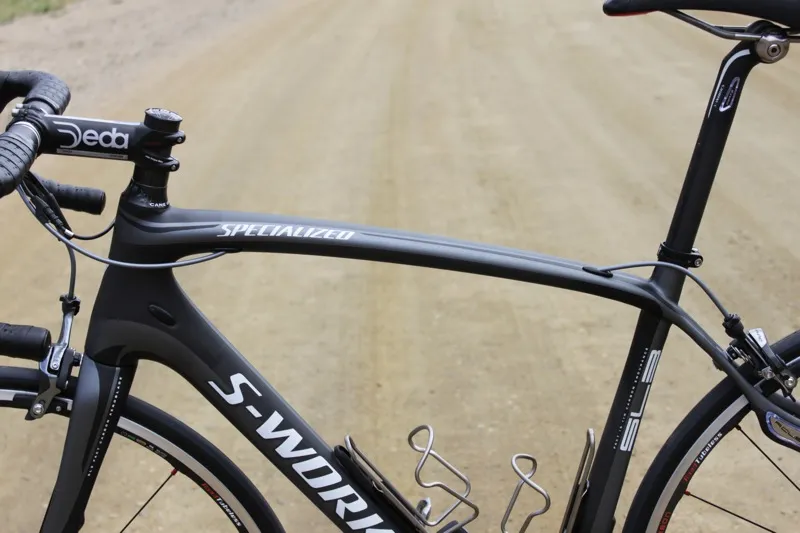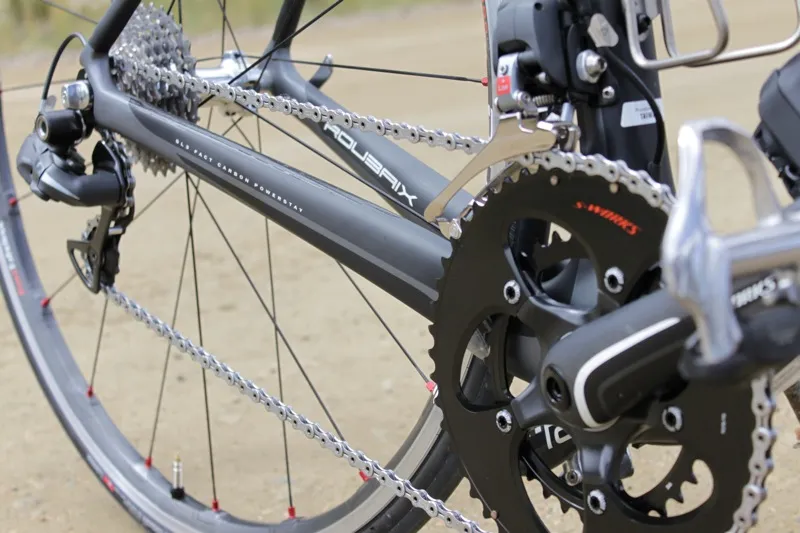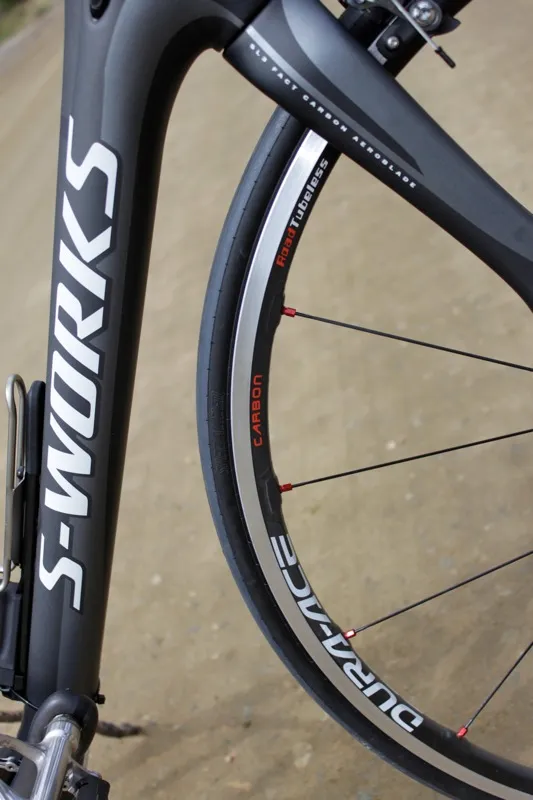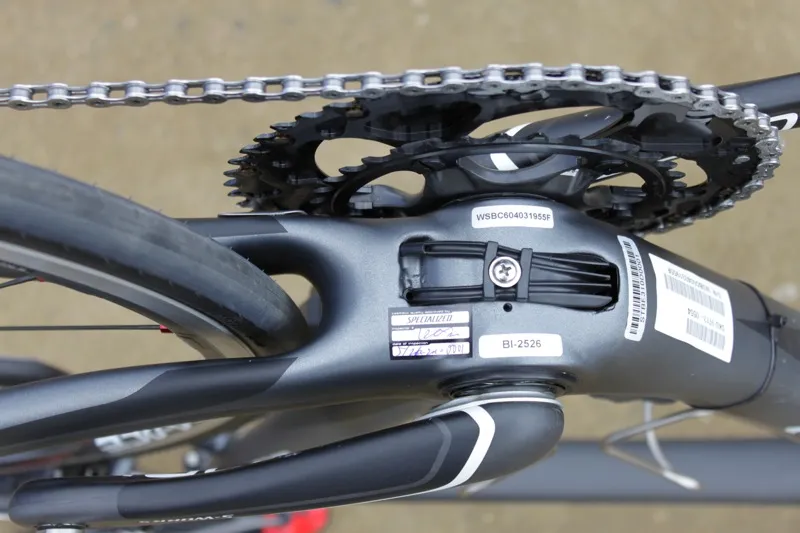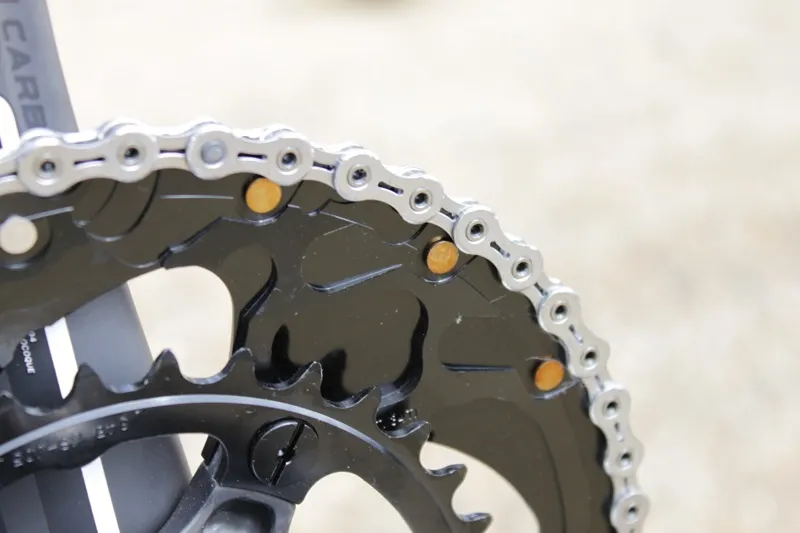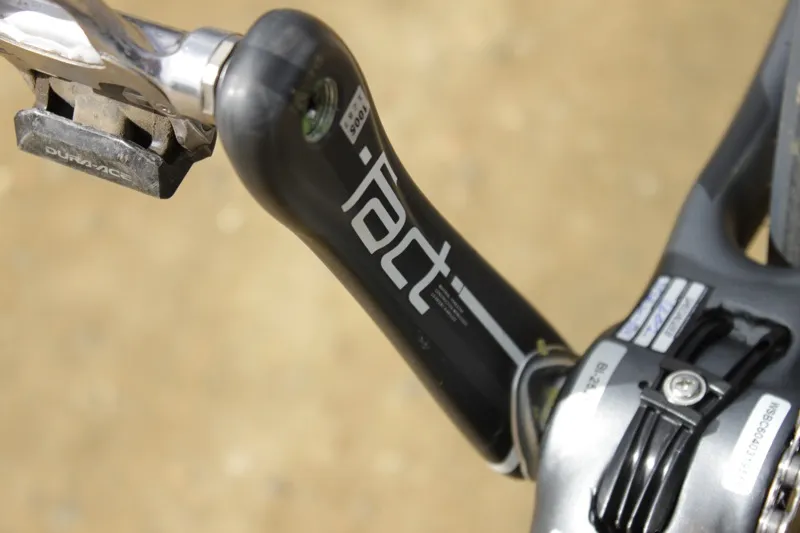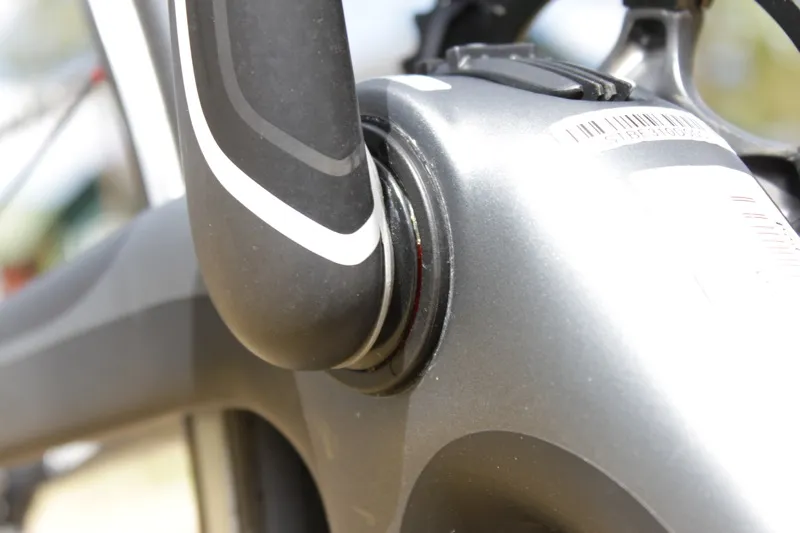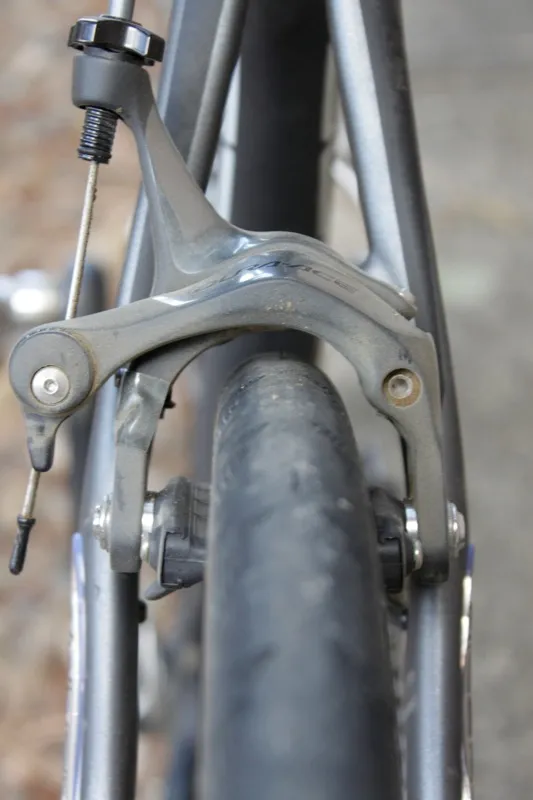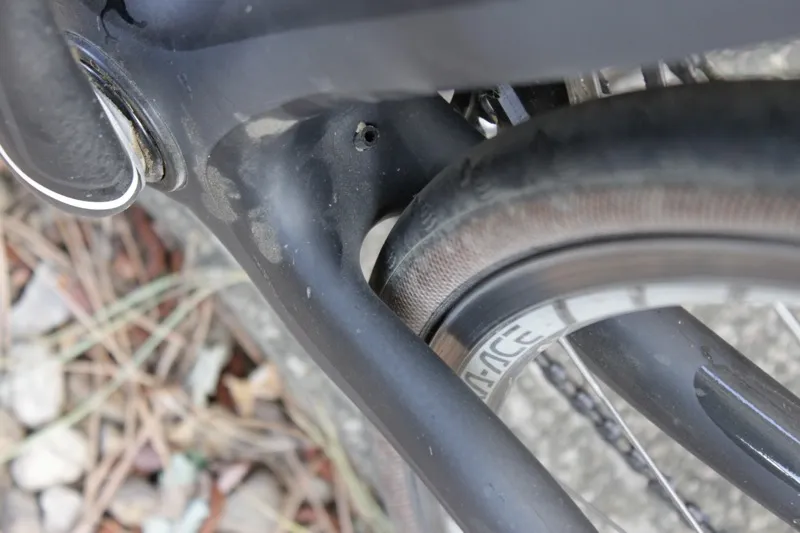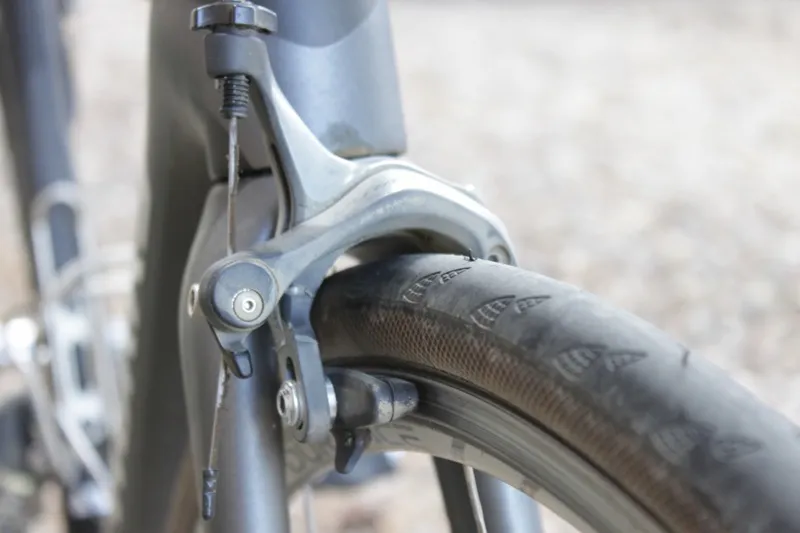There's no doubt that with the legs Fabian Cancellara brought to the 2010 edition of Paris-Roubaix, he could have won on just about anything.
He just happened to be on a new prototype Specialized Roubaix SL3, however, and after riding the 2011 production bike over some rough and hairy dirt roads in the Colorado Crooked Roubaix, it's fair to say it makes good on its claims of prowess over rough surfaces.
The bike’s comfort comes from two key aspects: its relaxed geometry – mainly its long 100cm wheelbase and 41.5cm chainstays – and its compliance. We had a hard time determining whether the latter was due to its noticeably soft 27.2mm seatpost, the frame's Zertz elastomer damper inserts or the carbon layup within.
Steering and pedalling stiffness feels within the realm of most production ProTour bikes we’ve ridden. This is likely due to the use of a tapered carbon steerer that uses Specialized’s Cobra design – thus named because the head tube flares near the bottom to give the down tube more torsional stiffness – and a deep-set lower 1-3/8in bearing that apparently distributes loads better than if it was placed at the bottom of the tube.
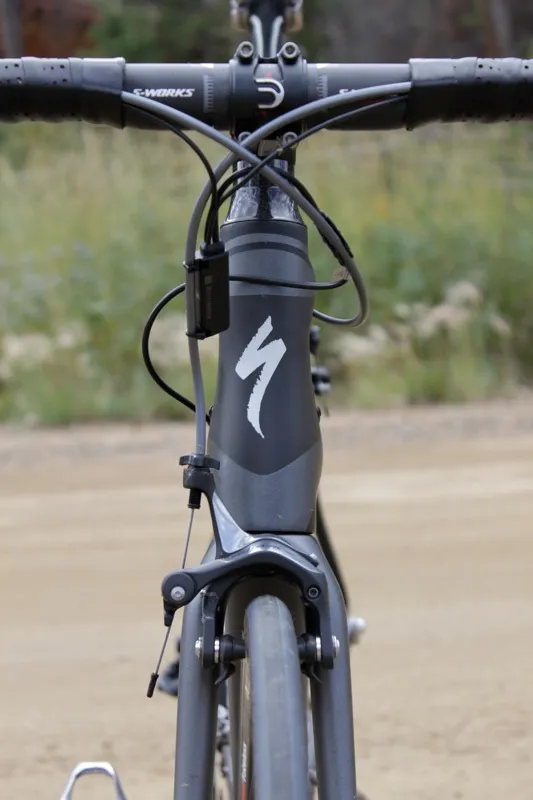
Specialized's Cobra head tube sets the lower bearing higher for more strength and flares to offer a wider attachment for the down tube
While the seatpost, which features its own Zertz insert, definitely adds comfort, the front end of the bike, equipped with a stiff S-Works carbon handlebar, wasn’t as compliant as we'd have expected after reading Specialized’s marketing literature.
In fact, the whole frame seems stiffer, both vertically and laterally, than rivals such as BMC’s new-for-2010 Teammachine SLRO1, which is admittedly a very compliant bike despite being built with a traditional racing geometry.
However, when you factor in the Roubaix SL3’s seatpost – the BMC uses a proprietary square post that isn’t nearly as flexible – overall comfort of the two bikes is very similar. The Roubaix is probably the better buy of the two for the average rider, with a more stable and upright position that any non-racer (or dirt and cobble racer) will likely find comfortable.

It was hard to tell how much of the bike's vertical compliance came from the frame versus the 27.2mm Zertz equipped seatpost
The long wheelbase, which is similar to that found on many comparably sized cyclo-cross bikes, made bombing dirt road descents as easy as it could possibly be, given that we were still on slick tyres. Be aware it does affect handling in tighter situations, though. In a quick pre-ride before the Crooked Roubaix, we noticed a much greater turning radius, especially on uphill switchbacks.
When it comes to weight, the 2011 S-Works Roubaix SL3 frame built from FACT 11r carbon loses 100g when compared to the 2010 model; Specialized claim just 965g for a 54cm frame (our complete 54cm bike weighed 7.4kg with Shimano Dura-Ace pedals). The SL3 designation means that the top tube, head tube and down tube are moulded together as one piece.
The Zertz vibration damping system is also updated using what Specialized call ‘In-Zertz’, which are larger and held in place with screws rather than captured by the carbon. The new system is said to give the elastomers better contact with the seatstays and fork legs, thereby increasing their vibration damping ability.

The new In-Zertz are said to perform better because they have more contact with the frame than the old version; they're also lighter because the housing mould is simpler
On top of better vibration damping, Specialized claim a 7.5 percent increase in vertical compliance (measured in deflection – mm/kN) over the previous Roubaix, along with a 20 percent improvement in its torsional-stiffness-to-weight ratio.
The 2011 bike uses a new all-carbon bottom bracket system called OSBB, which is said to have a very tight tolerance but conveniently fits SRAM’s PressFit 30 standard. A 30mm spindled S-Works FACT carbon crankset and beefy chainstays complete the package.
Our test bike came equipped with Shimano’s Dura-Ace Di2 electronic drivetrain, which is hands down the easiest, smoothest and best operating bicycle drivetrain on the market. For racers trying to squeeze every last ounce of energy into the pedals it may even be a game changer, as shifting takes no thought or finesse – two things your cable-operated drivetrain requires of you whether you realise it or not.
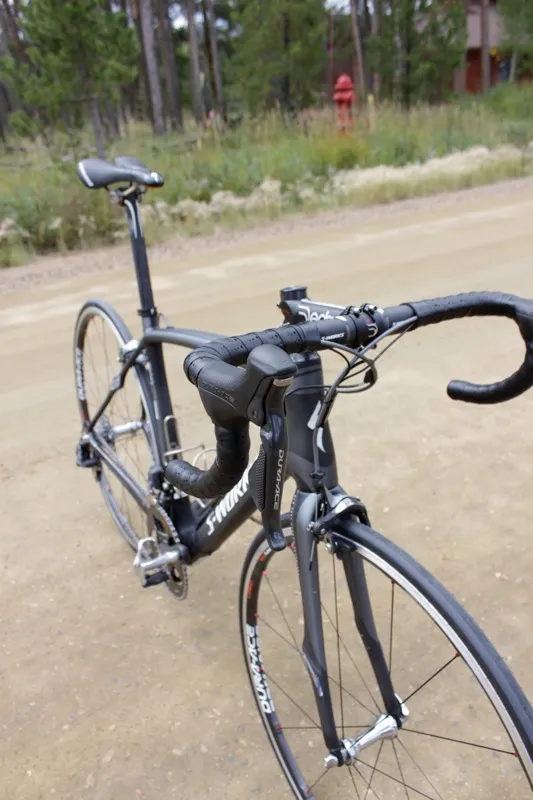
Our bike came with Shimano's superb Di2 electronic transmission
Shimano wheels also graced our test bike in the form of the WH-7850-C24-TU carbon tubeless clinchers, and in our opinion Specialized couldn’t have made a better choice. We're wholehearted believers in the tubeless-for-road design, but there is one bummer: there isn’t a good 25mm or larger tubeless road tyre available (Hutchinson’s Intensive is labelled as 25mm but it measures 23mm with our callipers).
For 90 percent of rides the tubeless 23mm Specialized Turbo tyres will prove superb. However, the Crooked Roubaix required something more so we ended up riding Continental’s 28mm Gator Hardshell clinchers, and remained flat free. The Roubaix sports plenty of clearance with this 28mm tyre and we'd venture to say it will readily accept a 30mm tyre.

Tubeless is the right way to go for the Roubaix, 80-percent of the benefit of tubulars with none of the headaches
We had no problems with the Specialized S-Works SL branded handlebar or stem. In fact, the Pro-Set stem is a really cool addition because you can adjust the angle from +/- 13-21° in 2° increments (10 total adjustments) for the best possible fit – as long as it's long enough to start with (ours wasn't).
We did have a bone to pick with the Avatar Team saddle, however. We found that the tall, soft sides along the cutout focussed pressure there, prompting a mid-ride adjustment and making for a painful last 20 miles of the Crooked Roubaix. As with all seats, comfort is dictated by personal body shape and preference.
Specialized expect the Roubaix SL3 models to be available in October. Our S-Works Di2 test model carried a hefty price tag of US$9,400, while a standard Dura-Ace version will be available for $7,700. Specialized will also offer two S-Works framesets with either the OSBB bottom bracket or the standard threaded variety.
In addition, there'll be a Roubaix SL3 Pro that uses the same construction method and design, but is made from less expensive 10r carbon. The Pro models will be available with a variety of component kits as well as frameset-only options at lesser price points.
